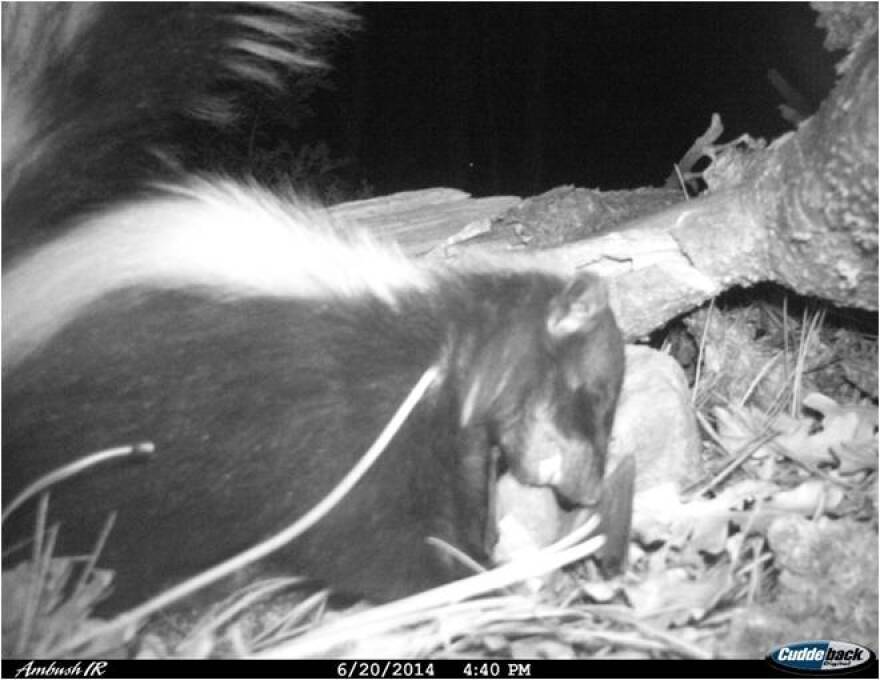In 2001, Flagstaff became the epicenter of a rabies outbreak among skunks and gray foxes. State health officials reported rabies undetected in wildlife in northern Arizona before that time. Since then, additional rabies outbreaks have occurred in the Flagstaff area every few years.
Blood tests showed the rabid skunks in 2001 had contracted a big-brown-bat variant of the virus, rather than a skunk variant. Rabies is known to spread by bites or scratches from an infected animal. But experiments show an animal can also contract it by eating an infected carcass.
Wildlife biologist Tad Theimer and colleagues at Northern Arizona University wanted to see if this is how the cross-species spillover occurred. They placed dead bats in various locations and set up camera traps nearby. Foxes, skunks, house cats, raccoons, and domestic dogs investigated the bats—but skunks frequently carried off the bat carcasses.
In separate work, the Centers for Disease Control analyzed the rabies viruses in the blood of the rabid skunks. They had thought one rabies spillover was responsible, but instead found multiple spillovers from big brown bats.
This summer, in two different incidents, rabid gray foxes attacked people walking dogs in Flagstaff, and a rabid javelina was reported in Coconino County. Both animals had the gray fox rabies variant.
These cases offer tantalizing clues about animal interactions that could lead to rabies transmission, and Theimer and crew will continue investigating.








